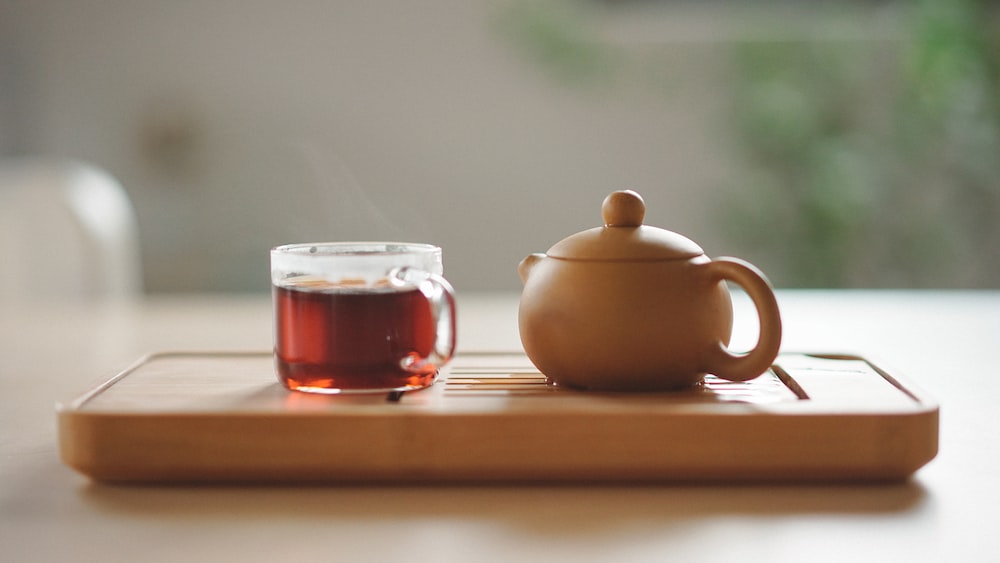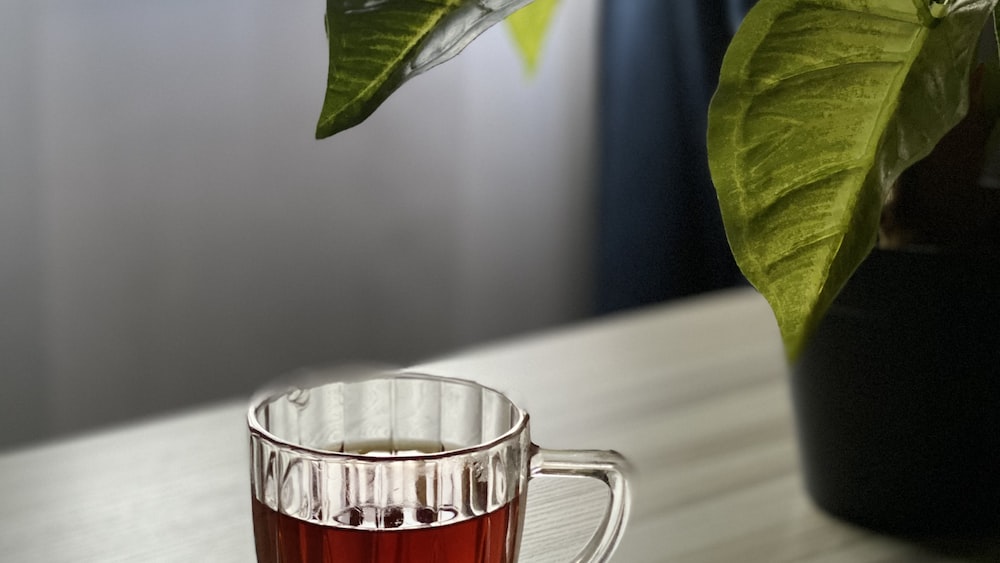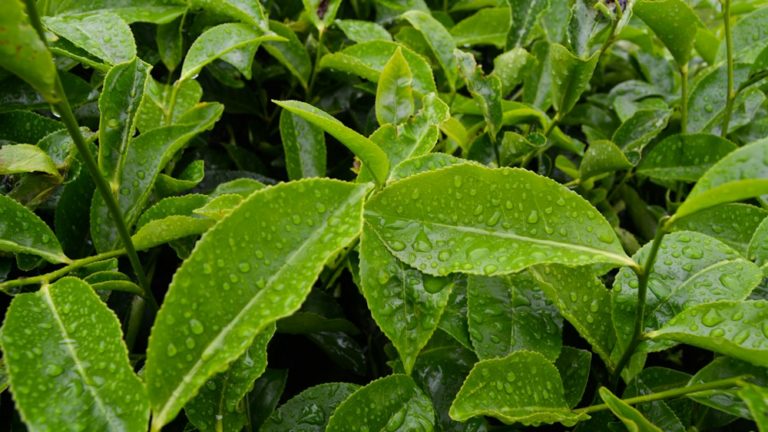Pu Erh Tea Pronunciation: Master The Correct Art

Pu Erh Tea Pronunciation: Master The Correct Art
Welcome, dear tea aficionados and the health conscious alike, to a little slice of the internet steeped in the wisdom of ancient leaves. Have you ever felt the embarrassment of bungling a word in front of connoisseurs, wishing the earth would swallow you up? Well, fear no more! Today, we’re embarking on an enlightening journey through the delicate process of pu erh tea pronunciation. It’s the mantra you’ll need in your tea-chanting sessions to avoid any faux pas in refined tea circles.
Key Points:
- Pu erh tea is pronounced poo-air with a slight inflection at the end.
- Pu erh tea has a rich history and cultural significance, originating from Yunnan, China.
- There are varieties of pu erh tea, including raw and ripe pu erh, each with distinct flavors and pronunciations.
- Pu erh tea cakes are compressed blocks of tea leaves that have been aged to improve with time.
- Traditionally, Pu erh Tea is consumed in small steepings, savoring each infusion.
- The health benefits associated with Pu Erh Tea include reducing cholesterol and aiding digestion.
Why all the fuss about pronouncing pu erh correctly, you ask? Imagine, if you will, attending a sophisticated gong fu tea ceremony, gracefully performing all the rituals, only to mispronounce the star of the show – cue the collective gasp and a record scratch! Pu erh tea pronunciation may seem like a tongue-twister, but worry not; we’re here to demystify it with a splash of humor and a pinch of insight.
From the ritualistic preparation to sipping etiquette, mastering this seemingly minor detail might just make you the yoda of tea ceremonies. So huddle up, sip in silence, and let’s get down to business – the art of pu erh tea pronunciation awaits and the mispronunciation gremlins shall be vanquished!
The Origins and Cultural Significance of Pu Erh Tea
The tale of pu erh tea is as rich as its earthy flavor, steeped in a history that weaves through the mountainside mists of Yunnan, China. But let’s not get ahead of ourselves, folks – to truly appreciate the significance of pu erh tea pronunciation, we must first unravel the threads of its storied past and cultural tapestry.
What is Pu Erh Tea?
So, what in the world is pu erh tea? It’s a dark tea, known locally as zhen, and it wraps a world of complexity beneath its humble appearance. Pu erh tea is to tea what fine wine is to the fruit of the vine – a camellia sinensis conundrum that keeps on giving with age, and trust me, age does wonders to this marvel.
Aged to perfection, this tea undergoes a post-fermentation process that invites a microbial transformation akin to a sorcerer’s spell, resulting in flavors as deep and mysterious as the Yunnan forests from whence it came. I mean, who wouldn’t want to sip on history?
Pu erh tea is like fine wine, with a complex and deep flavor that gets better with age, undergoing a post-fermentation process that transforms it into a mysterious and historical marvel.
The Historical Roots of Pu Erh Tea
Our journey through the mists of time takes us back to the Eastern Han dynasty, where pu erh tea began as the travel-hardened sidekick of traders on the ancient Tea Horse Road. Encased in saddlebags and traversing high mountains, this tea was the weightlifting champion of antiquity, pressed into cakes for easier transport.
The passage of time and rigors of travel naturally fermented the leaves, eventually making them a hot commodity – not just literally but in the trade markets across dynasties. Let’s raise our cups to those ancient traders whose “oops” turned into our “a-ha”!

Cultural Importance in Chinese Tea Ceremony
In Chinese tea ceremonies, gong fu tea reigns supreme – it’s the equivalent of a black-tie event for tea. Here, pu erh unfolds its layers of complexity with the grace of a dancer, making it a showstopper of the ceremony. It’s more than a drink; it’s a ritual that hums with the soul of ancient China, whispering tales of a culture rich with nuance and sophistication.
The dance of pouring, the aroma, and the first sip – every step is a nod to the meticulousness and reverence imbued within the gong fu tradition. Mastery of the ceremony isn’t just about the tea; it’s about the respect paid to every nuanced swirl in the cup. And believe you me, flubbing the “poo-air” never looked good on anyone, my friends.
The Basics of Pu Erh Tea Pronunciation
Now, let’s roll up our sleeves and get down to the gritty, brewtiful details of pu erh tea pronunciation. You might be wondering why there’s a whole fuss about this – but remember, once you’ve got this down, you’re no longer just a tea drinker; you’re the sip whisperer, one who commands the language of leaves.
Breaking Down the Phonetics
Let’s start simple: pu erh. It’s like saying “poo-air” but shorten the “poo” (you bet there’s a joke there) and add a touch of finesse on the “air.” Some argue it’s actually more of an “awe” sound than “air,” but we’re splitting hairs – the point is to evoke the echo of Yunnan mountains in your conversation and not the sound of disapproving tuts from your fellow tea lovers.
The intonation of the words is rather flat with a slight inflection at the end, much like the roll-off of a good tea on your tongue. Think subtlety, think grace, and remember, the whole ceremony hinges on the elegance with which you swing around these syllables!
Emphasize the elegance and subtlety in pronouncing pu erh to evoke the essence of Yunnan mountains and impress fellow tea enthusiasts.
Common Mispronunciations to Avoid
Right, you’ve been practicing in front of the mirror, but there are a couple of pebbles on the path to watch out for. First, “pei-er” or “pyoo-er” are not going to win you any friends in tea circles – they’re like sacrilege wrapped in two syllables. Second, an often made blunder: pronouncing pu erh as if it’s named after a yoga pose – it’s “poo-air,” not “pooh-err.”
Trust me when I say, getting pu erh tea pronunciation right is like a secret handshake in the world of tea aficionados. It’s your key to nodding smiles and respectful nods from the fandom. And hey, who doesn’t like a bit of respect with their cup of tea, eh?
Varieties of Pu Erh Tea and Their Pronunciations
You thought pu erh was just pu erh, right? Oh, hold onto your teacups, because we’re diving into the wonderful world of pu erh varieties, and there’s a veritable kaleidoscope to explore – each with its own linguistic twist.

Raw vs. Ripe Pu Erh Tea
In the great yin-yang of tea, we find raw (sheng) and ripe (shou) pu erh tea – the tea twins with distinct personalities. Raw pu erh, akin to a sassy youngster, is vibrant, grassy, and waits for no one before slipping into your cup with a brisk freshness. Ripe pu erh, on the other hand, is the cultured older sibling; patient, mellow, and with an earthy wisdom imparted by years of maturation in dark, cool cellars.
Pronouncing these beauties isn’t too hairy – “sheng” rolls off the tongue with the ease of a young leaf unfurling at dawn, while “shou” lands with the soft thud of autumn leaves. There you go, handled like a pro. Here’s to never getting caught on the wrong side of a pu erh mispronunciation again – cheers!
Raw pu erh is vibrant, grassy, and waits for no one before slipping into your cup with a brisk freshness, while ripe pu erh is patient, mellow, and with an earthy wisdom imparted by years of maturation in dark, cool cellars.
Understanding Pu Erh Tea Cakes
When you picture a cake, you’re probably imagining a fluffy, sugary delight, right? Now, toss that image out the window – because in the world of tea aficionados, a cake is a whole different ballgame. Pu Erh tea cakes – somewhat resembling disc-shaped ancient relics, rather than dessert – are compressed blocks of tea leaves that have been aged to improve with time, much like a fine wine. The art of compressing tea leaves into cakes dates back centuries, as it made the leaves easier to transport and trade.
Now, these tea cakes come in two main varieties, which are sure to tickle your taste buds in different ways. There’s the raw (‘sheng’ or ‘green’) pu’er, which starts off strong and astringent, but eventually matures into a smooth and mellow brew. Then there’s the ripe (‘shou’ pu’er), which goes through an accelerated fermentation process, giving it a richer, earthier flavor from the get-go. To immerse yourself in this tea culture, it’s key to not just sip, but also know how to say it right!
Here’s the crux – you don’t need to be Sherlock to decipher why these pu’er tea cakes are a hit. The fermentation process, the very foundation of pu’er, cultivates layers upon layers of flavor. You see, these teas are like the onions of the tea world, or maybe the parfait, if you ask Donkey from Shrek – complex with many layers. And remember, a properly stored pu’er tea cake will age gracefully, turning each sip into a time-travel experience to its origin.
Pronunciation Practice for Tea Enthusiasts
Taking the plunge into the world of pu erh tea pronunciation can feel like stepping into a language class, where you’re the new student and pu’er tea is the foreign exchange student that everyone wants to get to know. Don’t fret though; this is where practice peeks around the corner and winks, inviting you to a dance of tongue-twirling tea terms that promise to make you the belle of the tea ball!
Tips for Mastering the Pronunciation
First off, breathe. We’re not climbing Everest here; even though tackling pu erh tea pronunciation might feel akin to scaling linguistic peaks. To start, visualize the correct pronunciation as a delicate blend; ‘Pu’ is spoken as if the Pu in ‘puzzle’ decided to go on a tea-cation – plain, unembellished, and open-ended, like a ‘poo’ that’s seen the world. ‘Erh’ follows, pronounced similarly to the ‘uh’ in ‘fur’ – warm and cuddly, but with a tad more mystery.
The key ingredient is confidence, sprinkled with a dash of repetition. The melody of ‘Pu Erh’ should roll off your tongue as smoothly as this tea slides down your throat. Think ‘pu-er’, not ‘poo-air’ or ‘pure’, and definitely not ‘power’. Imagine guiding a tourist through a tea plantation – with utter confidence and clarity – and that’s the level of pronunciation finesse we’re aiming for. Keep your ears perked up for the subtle nuances and inflections.

Listening and Repeating: Learning from Native Speakers
The road to pronunciation nirvana is paved with imitation – and who better to mimic than native speakers? There’s something about the natural, lilted flow of fluent Mandarin that can make you go ‘Ah, so that’s how it’s done!’ as if you’ve just witnessed a magic trick. So, seek out videos or recordings of native Mandarin speakers uttering the hallowed words ‘Pu Erh’, and treat their cadence as your blueprint.
Like learning to ride a bicycle, you’ll wobble at first, perhaps muttering ‘Boo Air’ and wondering why the tea Gods are chuckling. But persevere! By imitating the enchanting rhythmic patterns and pitch contours of native speakers, you’ll gradually align your vocal expressions with the ancient echoes of Yunnan’s tea-growing mountains. And remember, a ‘Pu Erh’ snafu is nothing but a pit stop on the highway to tea mastery – don’t sweat the slip-ups!
Imitate native Mandarin speakers to master pronunciation and don’t worry about initial mistakes on the journey to fluency.
FAQs
1. How is Pu Erh Tea traditionally consumed?
Traditionally, Pu Erh Tea is consumed in small steepings, savoring each infusion as the leaves unfurl and release their deep, complex flavors. This ceremonial approach is a dance of patience and appreciation, a true testament to the tea’s transcendent journey from leaf to cup.
2. Can the pronunciation of Pu Erh Tea vary by region?
The pronunciation of Pu Erh Tea can indeed vary by region, reflecting the local dialects and linguistic idiosyncrasies. In different parts of China, you might discover subtle variations that sing with the region’s unique accentual twist.
3. What are the health benefits associated with Pu Erh Tea?
The health benefits associated with Pu Erh Tea are vast, with studies hinting at its role in reducing cholesterol and aiding digestion. This fermented brew is like a wellness whisperer for the body, offering a cup of tranquility and well-being.
4. Where can I find authentic Pu Erh Tea to practice pronunciation?
To practice pronunciation, authentic Pu Erh Tea can be found in well-curated tea shops, online specialty stores, or straight from the source during visits to Chinese tea markets and farms. The hunt for the real deal is part of the phonetic fun!
Conclusion
Embarking on the pu erh tea pronunciation journey is a most honorable quest. Picture yourself outshining at the next tea gathering with perfect diction, armed with the newfound ability to untangle the teas’ tender tales simply with the tip of your tongue. It’s not all about tongue acrobatics, though. The cultural foray behind each pour holds a wealth of tea traditions ripe for the discovery.
Our steeped sojourn has been a whirlwind tour from the plush landscapes of Yunnan to your tea cupboard, and we hope you’ve picked up a few pearls of pronunciation to wear proudly. Who knew that behind each pu’er tea cake was not just an aged gem but also a linguistic jewel waiting to be polished by eager enthusiasts like yourself? And with each mastered utterance, every sip of Pu Erh becomes a serenade to the art of tea.
And so, with our teacups brimming with warmth and words curled perfectly on the tongue, we bid you a fond farewell. May your tea journey be labyrinthine in taste and eloquent in expression. Raise your cup to the poetry in pronunciation – the world of Pu Erh awaits, whispering its ancient secrets through every steeped syllable. Here’s to the whispers turning into confident conversations over cups of comfort! Keep sipping, keep speaking, and, most of all, keep savoring – because in the end, isn’t that what it’s all about? Cheerio and until our paths cross in some cozy tea nook, Zoe.






